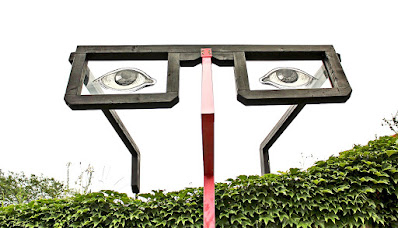SPECIAL GLASSES LET PEOPLE WITH COLOR BLINDNESS SEE MORE HUES
Unique patented glasses can improve color vision for those with one of the most common kinds of red-green color vision shortage, or "anomalous trichromacy," scientists record.
Significantly, the ability to determine and experience broadened color was also shown when color blind test topics weren't wearing the glasses.
"…THESE IMPROVEMENTS PERSISTED WHEN TESTED WITHOUT THE FILTERS, THEREBY DEMONSTRATING AN ADAPTIVE VISUAL RESPONSE."
At the very least 8 in 100 guys (8%) and one in 200 ladies (0.5%) experience from red-green color vision shortage (CVD), totaling 13 million in the US and 350 million worldwide.
While those with normal color vision see over of one million hues and tones, those with CVD see a greatly decreased range of shades. Individuals with CVD experience shades as more muted and rinsed, and some shades cause complication or are harder to differentiate.
The study evaluated the impact of spectral scratch filterings system on improving the chromatic responses of onlookers with red-green CVD over 2 weeks of use. The filterings system (EnChroma glasses) are designed to increase the splitting up in between color networks to assist individuals with color loss of sight see shades more vibrantly, plainly, and definitely.
For the research in Present Biology, CVD individuals used the unique filter glasses or sugar pill glasses. Over 2 weeks, they maintained a diary and were retested on days 2, 4, and 11 but without wearing the glasses. The scientists found that wearing the filter glasses enhanced responses to chromatic comparison reaction in people with red-green color loss of sight. It's uncertain for the length of time the improvement lasts without wearing the filterings system, but the proof shows that the effect continues for some time.
"I HAD NO IDEA HOW COLORFUL THE WORLD IS AND FEEL THESE GLASSES CAN HELP COLOR BLIND PEOPLE BETTER NAVIGATE COLOR AND APPRECIATE THE WORLD."
"Extended use of these glasses boosts chromatic reaction in those with anomalous trichromacy (red-green color vision deficiency)," says John S. Werner, teacher of ophthalmology at the College of California, Davis.
"We found that sustained use over 2 weeks not just led to enhanced chromatic comparison reaction, but, significantly, these improvements persisted when evaluated without the filterings system, thereby showing an flexible aesthetic reaction."
Werner keeps in mind that this effect cannot be accomplished with broad-band filterings system sold as aids to the color blind. He and his research associates think the study's searchings for recommend that adjustments of photoreceptor indicates activate a plastic post-receptoral substratum in the mind that could possibly be made use of for aesthetic rehab.



